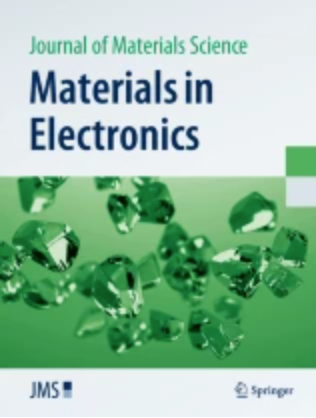Room temperature NO2 sensing performance of ZnO nanorods modified VO2(B) nanosheets interlaced self-assembly nanoflowers
Abstract
In this work, VO2(B) nanoflower–ZnO nanorod composite structures were proposed to enhance the sensing performance of VO2(B) nanosheets to NO2 at room temperature. VO2(B) nanoflower composed of nanosheets and ZnO nanorods composite structures with uniform size were synthesized by a combination method of hydrothermal and water bath. The effects of hydrothermal time on the morphology and gas-sensitive performance of VO2(B) nanoflowers, and the effect of ZnO content on the room temperature NO2 sensing performance of VO2(B) nanoflowers–ZnO nanorods composite structures were investigated. The VO2(B) nanoflower–ZnO nanorod composite structure shows a response of 4.96 to 5 ppm NO2, with an enhancement of up to 212% compared to VO2(B) nanoflower. The improvement in NO2 sensing performance can be attributed to an increase in the specific surface area of VO2(B) nanoflowers, an increase in the number of homojunctions in VO2(B) nanoflowers, and a synergistic effect of n–n heterojunction sensitization. Therefore, the activation of VO2(B) with ZnO may be a promising approach for the design and fabrication of high-performance room temperature gas sensors.


 求助内容:
求助内容: 应助结果提醒方式:
应助结果提醒方式:


